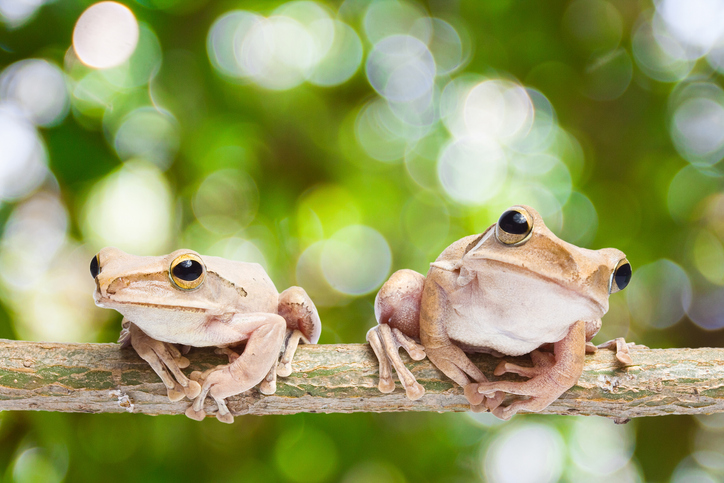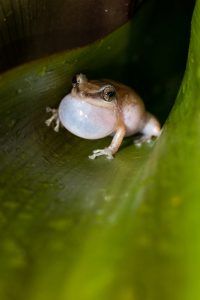There are some removal options available in addition to the many methods to exclude coqui frogs from living in a backyard. Removal options include relocation methods and methods which kill the frogs. Below are some removal options designed to either relocate or force coqui frogs to leave a property.
Lure Traps: These lure frogs to an area and encourage females to lay eggs on the trap. The trap can be removed and relocated to a place away from residential communities.
Hand Capture: Make sure to wear gloves when trying to capture the frogs by hand. Once caught, place the frogs in a breathable container and relocate to an area far away.
Yard Maintenance: Clean up the yard, removing anything that may attract coqui frogs, including food, water, and shelter. Doing this will deter more frogs from living in a backyard and force existing frogs to move to another location.
Turn Off Outside Lights: Outside lights attract insects that these tree frogs eat. Leaving the lights off means fewer bugs, reducing the number of frogs in the area. Once the frogs realize there is not enough food in a room, they will move to another location where the insects and spiders they feed on are plentiful.
Saltwater Spray: Saltwater stings the feet of coqui frogs. Spay a saltwater mixture on sidewalks and other hard surfaces in the yard. Frogs do not like this and will stay away from the area.
Call a Pest Control Specialist: The specialist can diagnose the situation and severity of the frog population. Additionally, the specialist will determine the best solution to remove and eliminate the frogs from a residential area.
As cute as they may be, coqui frogs are often considered a nuisance animal and can upset ecosystems. Commonly found in warm, moist climates, this tree frog is adaptable and is starting to inhabit drier climates bordering these tropical ecosystems. Contact a local pest control company with questions and concerns about coqui frogs found in residential areas. The technicians can help determine if the frogs are a nuisance and help remove them from the site.






